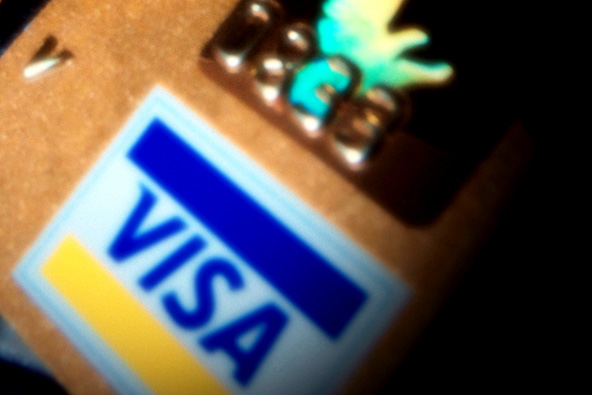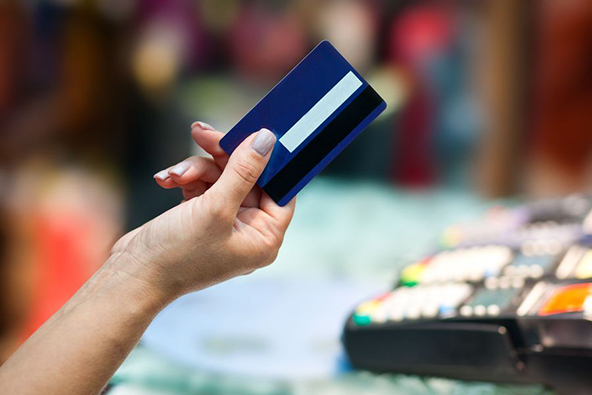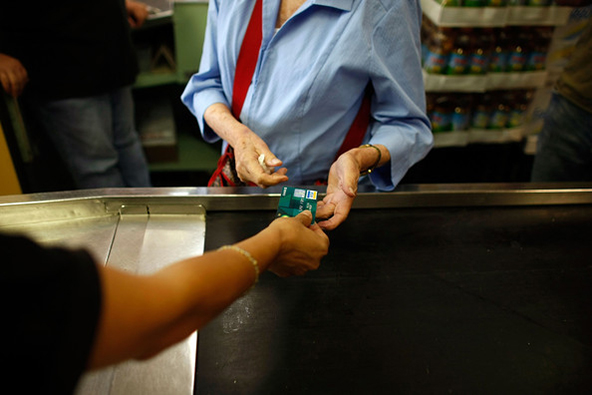How to Manage Chargebacks Caused by Authorization Errors

Most chargebacks occur when required transaction processing procedures are not followed and can be prevented with training and attention to detail. Authorization errors are a perfect case in point and Visa maintains four separate reason codes to designate chargebacks resulting from:
- Declined authorization.
- No authorization.
- Expired card.
- Non-matching account number.
Today I will review the causes for each of these chargebacks, the actions you can take to remedy them and to prevent their recurrences in the future. Unlike other types of chargebacks, preventing the ones related to authorization errors is entirely within your control and you should exercise it to the fullest possible extent. Let’s get started.
Visa’s Chargebacks Caused by Authorization Errors
Visa uses four different reason codes to designate chargebacks in this group, as follows:
Reason Code 71: Declined Authorization
This reason code is issued when the card issuer receives a transaction for which authorization had been declined.
1. Most common causes for Reason Code 71. This chargeback is the consequence of a merchant’s attempt to circumvent or override a declined authorization response, which can be done through one of the following methods:
- Forced posting. After receiving a “decline” or “card pick-up” response, the merchant forces the transaction through, without making another authorization request.
- Multiple authorization attempts. After an initial authorization decline, the merchant swipes the card one or more times until the transaction is successfully authorized. Such an authorization approval might occur if the issuer’s system becomes unavailable or times out and the transaction is forwarded to Visa for processing.
- Alternative authorization method. Following a decline of a swiped transaction, the merchant resubmits it by key entry or calls for a voice authorization and receives an approval.
2. Managing Reason Code 71 chargebacks. Your actions in response to a Reason Code 71 chargeback will depend on the particular circumstances, the most typical of which are listed in the table below:
| If: | Then: |
| The transaction was authorized and you received an authorization approval code. | Inform your acquirer of the transaction date and amount. Most acquirers will verify that an authorization approval was issued, in which case this type of chargeback may be rejected as invalid and you will never see it. |
| Your initial authorization request was declined, but you managed to get the transaction processed. | Accept the chargeback and move on. Fighting it will be a waste of time, as you will not win the re-presentment. |
3. Preventing chargeback Reason Codes 71. As already noted, preventing Reason Code 71 does not take anything more than following standard credit card processing procedures. In particular:
- Obtain an authorization before completing transactions. Most point-of-sale (POS) terminals are programmed to automatically send an authorization request to the issuer when a card is swiped or dipped and the dollar amount entered. Then a sales receipt is printed if the transaction is approved and not printed if it is declined.
- Acceptable alternatives if the POS terminal cannot read an EMV (chip) card. If your terminal cannot read a chip card, you can swipe or key-enter the transaction, provided that proper fallback indicators are sent to the issuer for approval.
- Train staff on your authorization policy. In particular, if an authorization is declined, sales staff should immediately stop the transaction and ask the customer for another form of payment.
It can be annoying to put a stop to a transaction, just because your POS terminal cannot read the card or your authorization request is declined. After all, the sale is already closed and all you have to do is to collect the payment. Yet, if you can’t get an authorization approval, that is exactly what you should do. Explain to your customer that her card cannot be accepted and ask for some other form of payment, e.g. another card or cash. If the customer cannot or will not do that, cancel the transaction.
Reason Code 72: No Authorization
This code is used when the card issuer receives a transaction for which authorization was not obtained or it was obtained using invalid or incorrect transaction data.
1. Most common causes for Reason Code 72. Usually, Reason Code 72 is issued when the merchant:
- Did not obtain an authorization approval for a transaction or, for card-present transactions, obtained it after the transaction date.
- Included the tip in the authorization amount. As we’ve discussed before, an authorization should only be requested for the known transaction amount, not the transaction amount plus an estimated tip.
To protect merchants from chargebacks where the transaction amount is disputed, authorizations for taxicab, limousine, bar, tavern, beauty / barber shop, health / beauty spa and restaurant transactions are automatically valid for the transaction amount plus 20 percent. The same is true for up to 15 percent in additional amount for travel and entertainment merchants.
2. Managing Reason Code 72 chargebacks. There are only two possible scenarios in which you can find yourself:
| If: | Then: |
| You did obtain an authorization approval. | Provide your acquirer with information about the transaction date and amount. |
| You did not obtain an authorization approval. | Accept the chargeback, as there is nothing you can do. |
Most acquirers will verify that a transaction was authorized and approved, before forwarding you the associated chargeback, so you will never see it. The time limit for responding to Reason Code 72 is 120 calendar days from the transaction date.
3. Preventing Reason Code 72. Preventing this type of chargeback is within your full control. Here is what you should be doing:
- Obtain an authorization approval before completing transactions. An authorization request is automatically sent to the issuer when a card is swiped and the dollar amount is entered. A sales receipt is then printed if the transaction is approved. If it is not approved, you will receive a “Decline”, “Call Center” or “Pick-Up” message.
- Make sure the authorization amount is the same as the check amount. Do not include the tip in your authorization request. For example, if the check before tip is $64.35, the authorization should also be for $64.35. Make sure that your POS terminal is programmed to authorize only for the check amount before the tip is added.
- If you are unable to get an electronic authorization because your terminal isn’t working or because the card cannot be read, you can request an authorization either by key-entering the transaction or calling your voice authorization center. If your request is approved, make sure that the approval code is on the sales receipt. If you obtained a voice authorization, write the approval code on the receipt. Take an imprint of the front of the card on the receipt and have the customer sign it.
- If your terminal cannot read the card’s chip, follow “fallback” procedures and accept the EMV card by swiping its magnetic stripe through the reader, as prompted on the terminal’s screen. Be advised, however, that if your terminal is chip-capable, your default option should always be chip-reading rather than swipe.
- Train your staff. Staff should be instructed to authorize only for the check amount and exclude the tip. For chip-capable terminals, training should be provided on fallback processing procedures as well.
So preventing Reason Code 72 chargebacks is really quite straightforward. All you have to do is to request authorization only for the check amount and then not to process the transaction unless you receive an approval response. It’s that simple.
Reason Code 73: Expired Card
This code is used when the card issuer receives a transaction, which was completed with an expired card and was not authorized.
1. Most common causes for Reason Code 73. This Reason Code can be initiated when both of the following conditions are met:
- A merchant accepts a card past its expiration date and
- An authorization approval was not obtained from the card issuer.
So this chargeback is only valid when the issuer did not authorize the disputed transaction, whether or not the card had expired.
2. Managing Reason Code 73 chargebacks. As always, your response to a Reason Code 73 chargeback will be determined by the particular circumstances, the most common of which are listed in the table below:
| If: | Then: |
| The card had not expired (in a key-entered transaction). | When processing key-entered transactions, you should always take a manual imprint of the front of the card on the sales receipt. The expiration date should be on that imprint and if it shows that the card had not expired at the time of the transaction, send a copy of the receipt to your acquirer. The chargeback is invalid, whether or not an authorization approval was obtained. |
| The card had expired and an authorization approval was obtained. | If the card was swiped or a manual imprint made and an authorization approval was obtained as required, inform your acquirer of the transaction date and amount. In fact, many acquirers automatically manage this type of chargeback, so you will never see it. |
| The card had expired and no authorization was obtained | There is no remedy and you should accept the chargeback. |
| The card had expired and an authorization approval was obtained (in card-not-present transactions). | If the transaction was a MO / TO or e-commerce one and an authorization approval was obtained, inform your acquirer of the transaction amount and date. Again, acquirers automatically manage this type of chargeback, so you should never see it. |
3. Preventing Reason Code 73. Preventing this type of chargeback in a face-to-face setting is quite straightforward. Staff should always check the card’s expiration date, as well as all other security features, and they should never accept one that has expired. We have written previously on how to recognize counterfeit cards, so you should be able to identify those as well (and make a Code 10 call), even when they show a valid expiration date.
The circumstances are obviously very different in MO / TO and e-commerce transactions, where you rely on your customer to provide valid information. However, as long as you have obtained an expiration date, entered it correctly into your authorization request and the issuer has approved it, you have done your job and the transaction cannot be charged back to you (not for that reason, anyway), even if the expiration date turns out to have been invalid. So all you have to do is to make sure that you always ask your customers for their cards’ expiration dates for payments over the phone and make the “expiration date” field in your e-commerce website’s checkout form mandatory.
Reason Code 77: Non-Matching Account Number
As its name indicates, this reason code is issued when the transaction did not receive authorization and was processed using an account number that is not recognized by the issuer.
1. Most common causes for Reason Code 77. This type of chargeback is typically issued when the merchant:
- Incorrectly key-entered the account number or
- Incorrectly recorded the account number for a mail order or telephone order.
2. Managing Reason Code 77 chargebacks. Listed in the table below are the most likely circumstances associated with a Reason Code 77 and my suggestions on the course of action you should take in each one of them:
| If: | Then: |
| The account number on the sales receipt matches the one listed on the chargeback and the transaction was authorized. | Contact your acquirer and request that they re-present the transaction and include the authorization log when returning it to the card issuer. |
| The account numbers don’t match. | Accept the chargeback and process a new transaction with the correct account number. Make sure you obtain an authorization approval for it.* |
| The transaction was not authorized. | Accept the chargeback — there is nothing to be done. |
*Once you accept the chargeback, you need to process the new transaction with the correct account number within 10 days of the original transaction. Unfortunately, due to the chargeback cycle, in most cases you will not be able to meet this time frame, which may result in a second chargeback for?áReason Code 74: Late Presentment. Contact your processor, before submitting the new transaction, for assistance. Some multi-location merchant types (e.g. travel and entertainment, service stations, etc.) have 20 days for submitting the new transaction.
3. Preventing Reason Code 77. Preventing Reason Code 77 is all about consistently implementing best payment processing practices. Here are some suggestions:
| If: | Then: |
| Your POS terminal cannot read the card’s magnetic stripe. | Key-enter the account number and request an authorization approval. Make sure that the key-entered account number matches the one on the card. Make a manual imprint of the front of the card on the sales receipt that is signed by your customer. |
| Your terminal is not working or you do not have one. | Request a voice authorization and write the approval code on the sales receipt. Then make a manual imprint of the card, as instructed above. |
| The account number displayed on the terminal doesn’t match the one on the card. | Do not complete the transaction and make a “Code 10” call. You will then be instructed on how to proceed. |
| Accepting payments by phone. | Read the account number back to your customer to verify it. |
Training staff on proper card processing procedures is as important in preventing Reason Code 77, as it is in preventing any other chargeback caused by an authorization error. Staff should be instructed to verify that the account number on the card matches the one printed on the sales receipt or displayed on the POS terminal. They should be taught not to accept the card if these numbers do not match, but make a Code 10 call instead and then follow the issuer’s instructions. Reason Code 77 is as much a result of a processing error, as it is a consequence of inadequate training. You may not be able to prevent the former, but you can surely correct the latter.
Image credit: Flickr / iujaz (the image has been modified from its original version).


